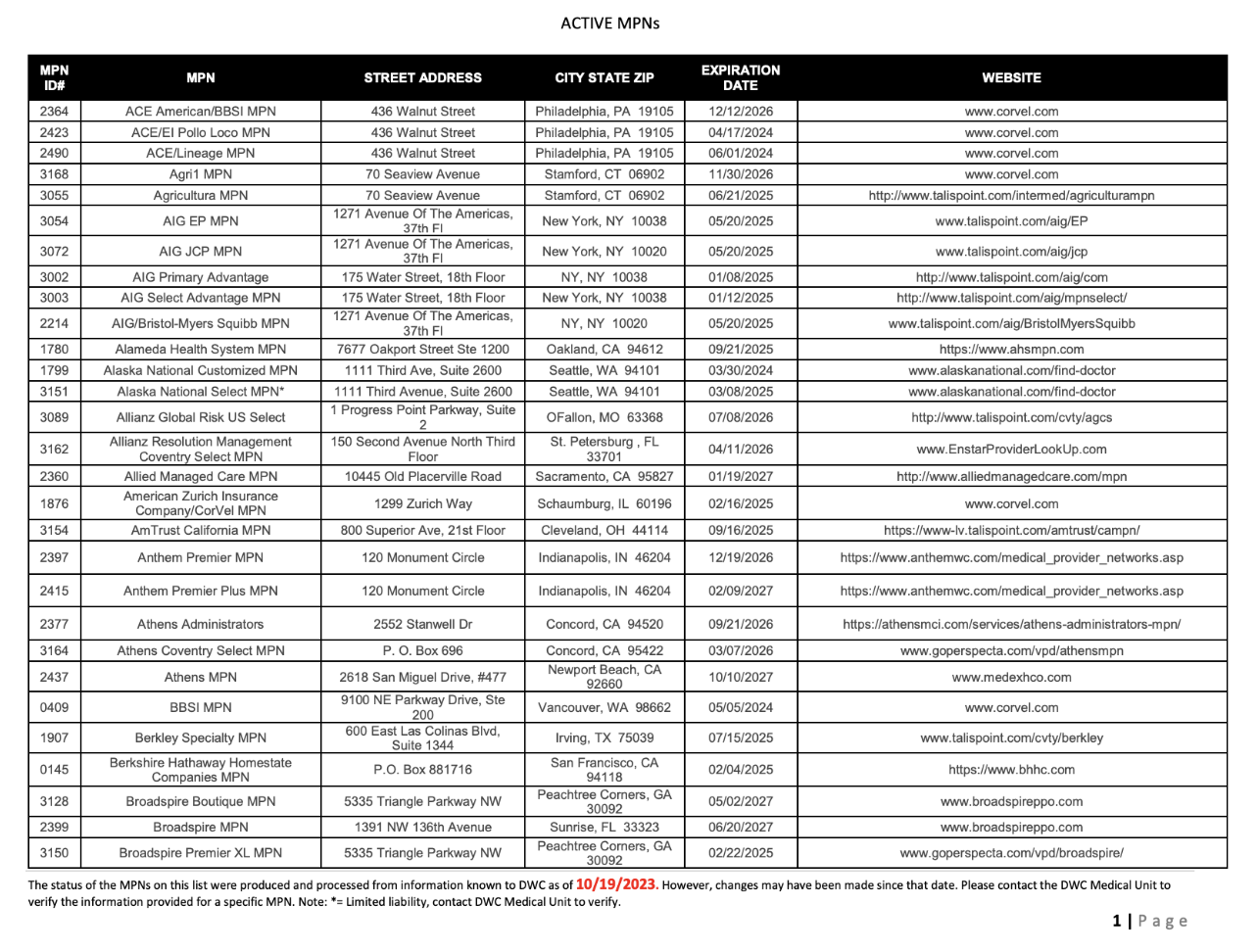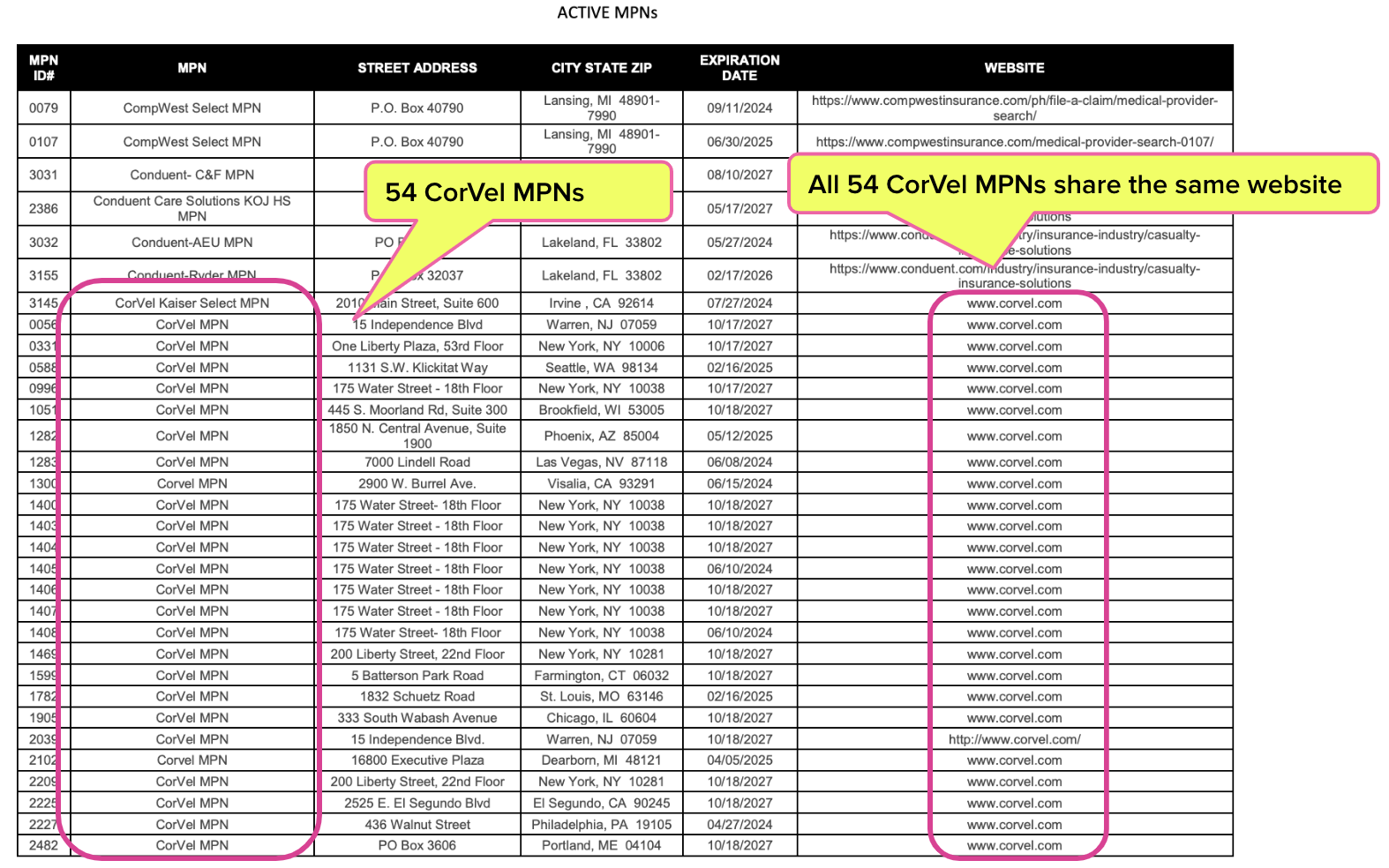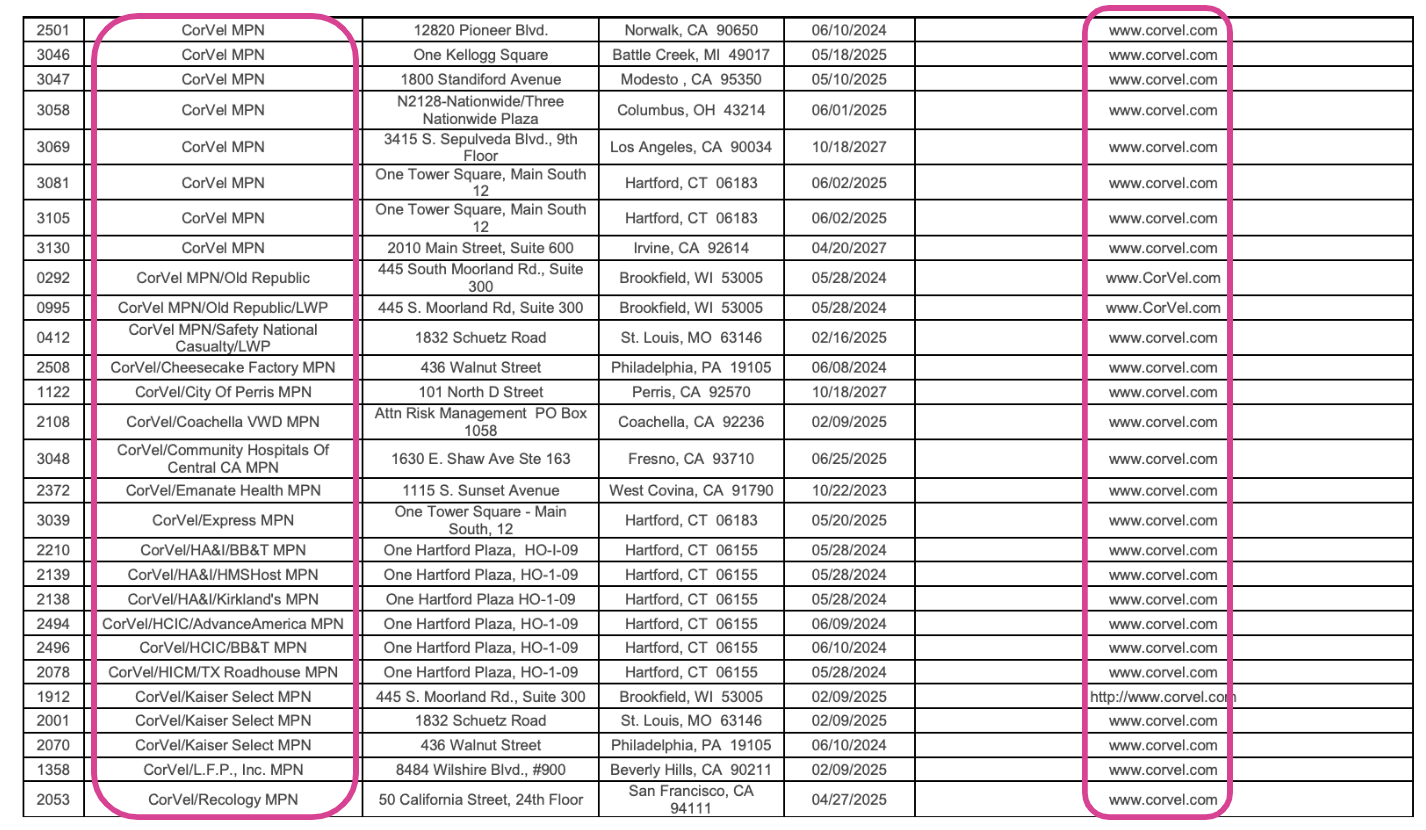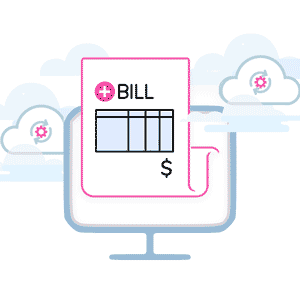DWC's New MPN List Helps No One
.gif)
California’s Medical Provider Network (MPN) system is an unmitigated disaster — and the latest “solution” from the Division of Workers’ Compensation (DWC) is laughable in its impotency.
Providers have no idea whether or not an MPN applies to a given injured worker, or if so, whether the provider is a member of the applicable MPN. The result: providers go unpaid for treating injured workers when the claims administrator asserts that the provider was “ineligible” due to MPN non-membership (even when the MPN in question turns out to be defunct or non-existent).
Because of the MPN system, treating injured workers is a financial roll of the dice for providers. In this space, we have advocated over and over for a simple, feasible, solution: a database where providers can accurately determine MPN applicability and membership.
Instead, the DWC has offered…a 12 page PDF.
Listing only the names, ID numbers, websites, addresses, and expiration dates of active MPNs, this new DWC resource is less than useless for providers and injured workers.
DWC Active MPN List
The DWC currently lists 2,492 MPNs, the vast majority of which are terminated, withdrawn, suspended, or revoked. Each MPN can add or remove providers at a whim, and are only legally required to update their provider rosters quarterly, which means a given roster is only accurate 4 days of the year.
In other words, it’s a mess.
For years, the DWC has maintained a searchable MPN list on its MPN web page, where providers can at least attempt to find relevant MPN information. Unfortunately, the searchable list often does not include the MPN information that matters most, which is:
- The names of employers or insurers maintaining an MPN: Providers cannot determine whether a self-insured employer or insurer maintains an MPN.
- Whether the provider is a member of the applicable MPN: Even if the provider can somehow figure out the name and ID number of an MPN that applies to an injured worker, the MPN website often makes it impossible for the provider to search for their name or practice to check their membership status. Often, these MPN websites are functionally unnavigable or require a password. And of course, the information may be outdated.
As daisyBill and other advocates have insisted, MPNs will never function without a central, always-updated database where providers can:
- Enter the name of the employer to check MPN applicability, and
- Enter their own name or NPI number to check MPN membership
This centrally managed MPN database is achievable with 21st-century technology. Instead, DWC has given providers a different resource: a 12-page PDF list of active MPNs (or at least, active at the time of publishing).
Instead of using widely available information management technology to solve a very real problem, the DWC has transported us to 1984 — both in terms of its outdated tech and its dystopian bureaucracy.
Providers may download a PDF document that features no new information, other than having winnowed out the defunct MPNs and added the expiration date for each active MPN. There’s still no way to check MPN applicability or provider membership, and still no way to know whether the claims administrator will reimburse the provider for authorized treatment.
Useless Info re: TPAs and Other Entities
There is little actionable information in the new active MPN list, in large part because the DWC allows entities other than the insurer or self-insured employer covering the injured worker to maintain MPNs.
For example, the active MPN list features several MPNs maintained by Third-Party Administrators (TPAs), outside companies that handle claims on behalf of insurers and self-insured employers.
In fact, the active MPN list features no less than 54 MPNs named after (and presumably maintained by) the TPA CorVel. The website for every one of those 54 MPNs is simply the generic CorVel website.
Exactly how does this *new* MPN PDF help providers or injured workers?
The MPN crisis is one of California workers’ comp’s biggest, most consequential challenges. Solving it will require applying the technological resources necessary to manage its complexities. A PDF does not meet that standard.
This half-hearted solution is an insult to the providers who still — somehow — choose to keep treating injured workers in California.
Learn how workers’ comp e-billing works (and what can go wrong) at our free live mini-lesson + Q&A on November 2. Sign up and submit your questions below.
SIGN UP & SUBMIT QUESTIONS
DaisyBill provides content as an insightful service to its readers and clients. It does not offer legal advice and cannot guarantee the accuracy or suitability of its content for a particular purpose.






.gif)

How would the industry solve for employees that change employers? Does the proposed database solution require that employers refresh their employee data? What about the subsequent MPN administrators, can we count on these groups to do the same when if they are dependent on employers to do their part. What would be the impact and cost to employers to implement this idea? What influence does the California Privacy and Protection Act play? Can employers disclose the personal information to the DWC without liability or violation to the employee rights?